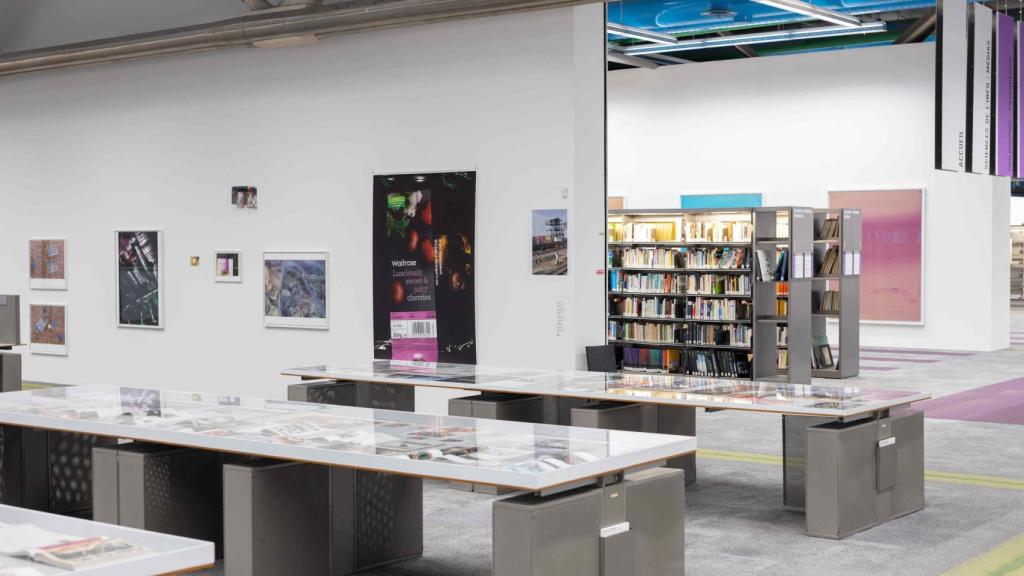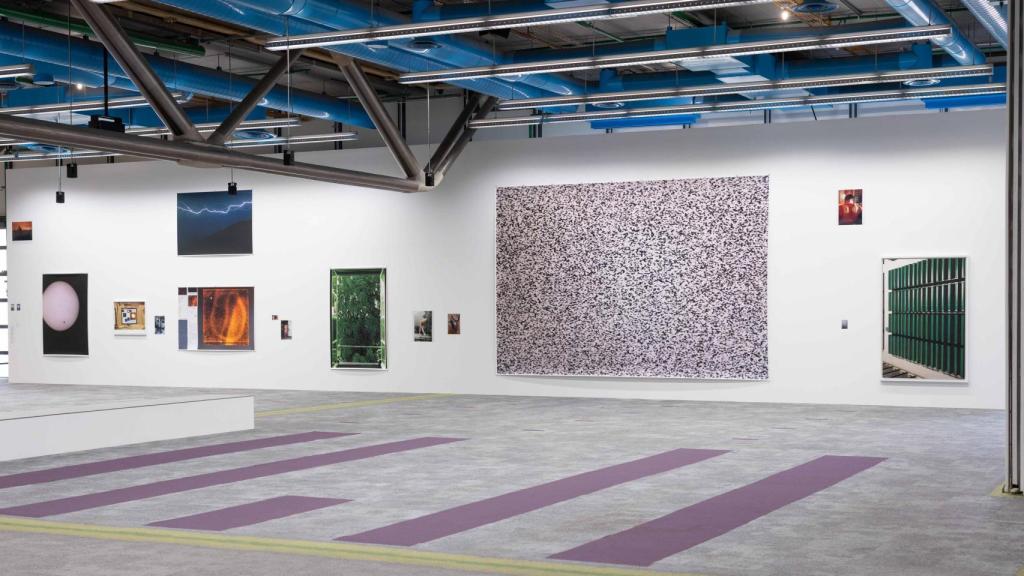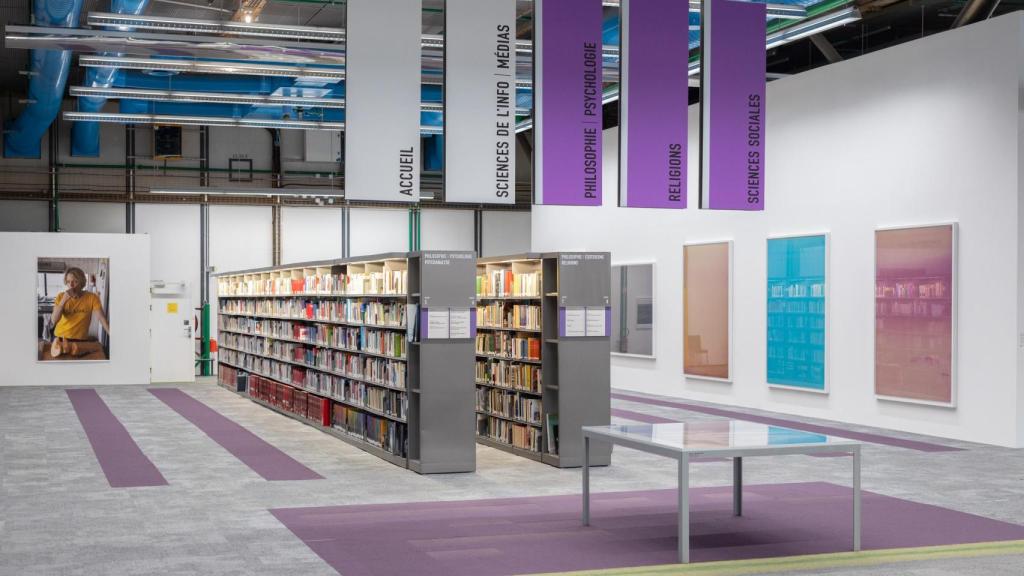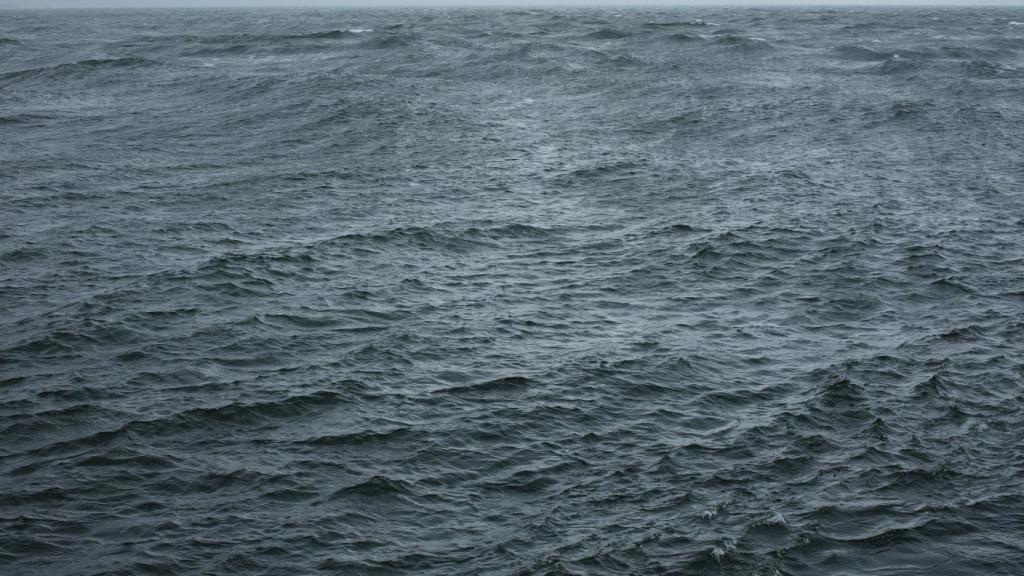Let us briefly put the background on the table, which there is a lot to tell. Almost three years ago, the Center Pompidou in Paris invited the German artist Wolfgang Tillmans (born in August 1968 in the southern Ruhr area) to hold a solo exhibition. One detail conditioned – and made – the proposal attractive.
The museum, designed by Renzo Piano and Richard Rogers and opened in 1977, will close its doors this fall to immerse itself in a rehabilitation that will keep its doors closed until 2030, to the misfortune of its large audiences and many generations of artists, who have found their home there for almost half a century.
If peering into the abyss of closure is no small feat, neither is the space assigned to Tillmans: the BPI, the famous Bibliothèque Publique d’Information, housed on the second floor of the museum and also home of many.
Why is this place so famous? Because few spaces can display a sense of public as seasoned as this one. Anyone who wanted to come here to consult its inexhaustible funds, to study, to write, to do whatever, without any restrictions.
Years ago, when I published regularly in the magazine to which I return today, I visited Paris several times to cover exhibitions (I remember Jordi Colomer’s at the Jeu de Paume, Anri Sala’s in Beaubourg itself…). The texts were created in parks and barsin shitty hotels, on the RER to the airport and on the return flights, but they always started at the BPI.
Wofganag Tillmans: ‘Moon in Earthlight’. Foto: Courtesy Galerie Buchholz, Galerie Chantal Crousel, Paris, Maureen Paley, London, David Zwirner, New York
I don’t know whose proposal to activate the library is, the institution or Tillmans. In any case, it has undoubtedly been a great success. The artist’s relationship with books and with spaces of knowledge has been the center of a target that he has diligently pursued throughout a career that began in the late eighties.
He’s seen it all. The Berlin Wall fell at his side, he lived the nineties with an energetic critical attitude; he saw the face of AIDS – he met Wojnarowicz and felt the fascination that the American way of being in art and life produces in us today; He saw the markets collapse, he attended Brexit with rage, he explored the private sphere, with moving images, although the projection of the domestic had always been a strong issue for him, before, long before, the pandemic. And he showed us the corners of the night.
We got to know the insides of Berghain, the legendary Berlin club, and, from emotion and truth, He taught us the party, the taste of sweat, the texture of the skin.
Tillmans understood very early on the potential of images to accommodate multiple forms of knowledge, and if knowledge was broad, so was photography. His repertoire of contemporary iconography is typical of a tireless essayist of our time.

View of the exhibition. Photo: Wolfgang Tillmans / Jens Ziehe
Astronomies, portraits, still lifes, subalternity, truth and its oppositeabstraction and experimentation in the dark room, architecture, AIDS, the negotiation of public space, cinema, social relations, domestic intimacies, the South and the incipient markets that awaken after the colonial virus… It’s all here. Stop and think about it. Wouldn’t this thematic list be the best curatorial glossary of the 21st century?
Social networks had already warned me that Tillmans had not only placed his pieces in space but had made a deep and incisive library reading. One enters the museum and there is nowhere to buy a ticket, the shop on the right is closed, the entrance on the left that leads to the rooms is also closed, because there is nothing in the rooms…
They say that a twilight sensation She has been touring the French art scene for months, resigned to the silence that is coming, and the artist, whom no one can accuse of lacking empathy, knows it. Hence the commitment to such a beloved place, which translates into multiple actions.
The most visible is the carpet, which, paradoxically, we would never have noticed. Not only has it not been removed, but in some sections it has been renovated by the artist to use its geometric patterns, gray and purple, which mark the rhythm of the assembly. The place as a tuning fork. There are situations in which space and images seem the same thing.

Exhibition view: Photo: Wolfgang Tillmans / Jens Ziehe
The exhibition (titled Nothing has prepared us and everything has prepared us), however, it is deeply political, perhaps his most political show. Tillmans is, or always was, a indomitable Europeanist.
His position on Brexit was resounding, and you don’t have to be a lynx to know that this timorous Europe, trapped in its doubts and fears, has him stranded in fear. The Pompidou, which burst onto the scene in the seventies with its groundbreaking architecture and its desire to recover the hegemony that New York stole from Paris, today is heading towards a closure for sanitationat a time when Europe is experiencing its lowest hours.
That in the face of the foreseeable shipwreck, everyone has already fled, Wofgang Tillmans be the last one to jump off the ship It is still a powerful metaphor. That is why he conceives this project at the BPI from responsibility, placing this space in memory; him, with the agreement signed with the present that has made him so reliable when it comes to understanding the world and of which with so much generosity and, also, demand he has made us participants.
In the central area, Tillmans has placed its Truth Study Center. Reuse display cases in which the material is arranged, photographs, photocopies, printouts of images stolen from the Internet, newspaper clippings, books… With all this material questions various concerns related to the power of information and the way in which power acts to block its circulation.

Exhibition view: Photo: Wolfgang Tillmans / Jens Ziehe
It uses library furniture as a device. Remove shelves and place images on them abstract, as if they had always been there. Use reference computers to polish the research concept. Its screens broadcast videos of library users filmed by Tillmans himself.
If you are seduced by the color of a fire extinguisher, hang an image of similar shades. Is a very free artist. Your archive of images must be enormous, and each one is given the bias it wants according to the context in which they must live. Enlarge to large formats, give them the size of a postcard, frame or hang with clips, fixed at the top, flying at the bottom.

Wolfgang Tillmans: ‘The State We’re In’. Foto: Courtesy Galerie Buchholz, Galerie Chantal Crousel, Paris, Maureen Paley, London, David Zwirner, New York
I confess that I told the friend I went with, knowing what the networks around the event had already told me displaythat, in the end, the images were going to be the least of it. No. They carry the same one with them ideological and aesthetic charge with which Tillmans has taught us to look.
The post Wolfgang Tillmans closes the Pompidou in Paris with the most important exhibition of the year appeared first on Veritas News.
